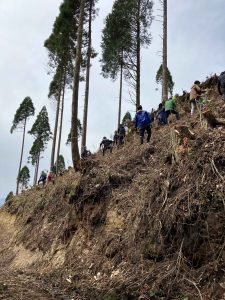The 20th “Aso Taikan-no Mori” Forest Tree Planting was Held!
On Saturday, April 5, 2025, we conducted our 20th tree planting activity at the Aso Taikan-no Mori forest. As this was the 100th anniversary of the founding of the Higo Bank, we invited the priests from Aso Shrine to perform the Shinto ritual.
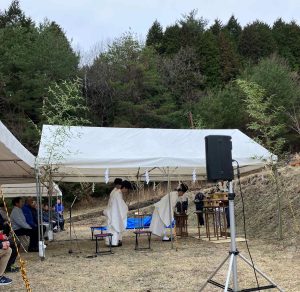
At the ceremony, Chief Director Kai addressed as he explained the history of tree planting activities by the Foundation and the Higo Bank: “I am very happy to be here today to celebrate the 100th anniversary of the Higo Bank’s founding and the 20th “Aso Taikan-no Mori” tree planting with about 200 of you participants. To nurture groundwater in Kumamoto, we have thinned cedar and cypress trees and planted approximately 160,000 broadleaf trees such as sawtooth oak, jolcham oak, Japanese zelkova, wild cherry, and yamamomiji maple, which are effective for groundwater recharge. Since the fall of two years ago, we have also held the “Autumn Foliage Festival” by inviting the general public. With everyone’s cooperation, “Aso Taikan-no Mori” has gradually become more well-known, and the number of people visiting and interacting with nature has increased. We will continue to plan events that promote interaction with local residents and expand the circle of groundwater protection.”
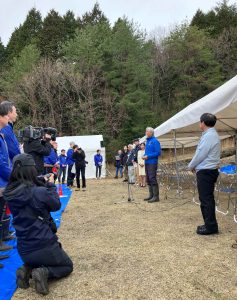
Ms. Matsushima, Mayor of Aso City, gave us the greeting of guest of honor.

President Kasahara of the Higo Bank presented a certificate of appreciation and an enclosed gift of money to the representatives of the “Aso Taikan-no Mori Management Committee” who have been assisting us in our tree planting activities.
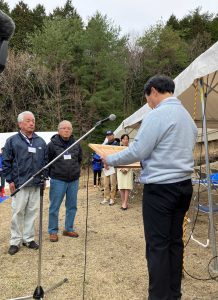
To commemorate this year’s activity, we planted a 16-year-old oshima cherry tree and erected a marker pole.
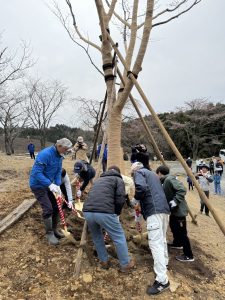
A group photo was taken before heading to the site.
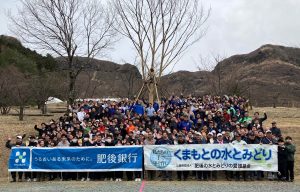
The participants were divided into four groups and traveled to the site, then paired up to plant 2,000 saplings of cherry and maple trees. Here is a snapshot of Chief Director Kai planting a tree.
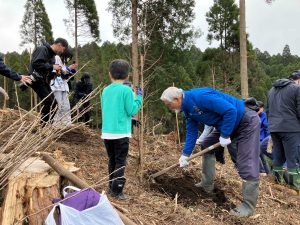
Here is a snapshot of President Kasahara planting a tree.
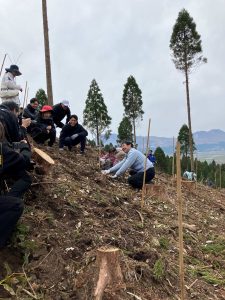
Groups 3 and 4 were able to successfully plant the planned number of saplings without incident, despite the slope was so steep that it was called “horse’s back”.
